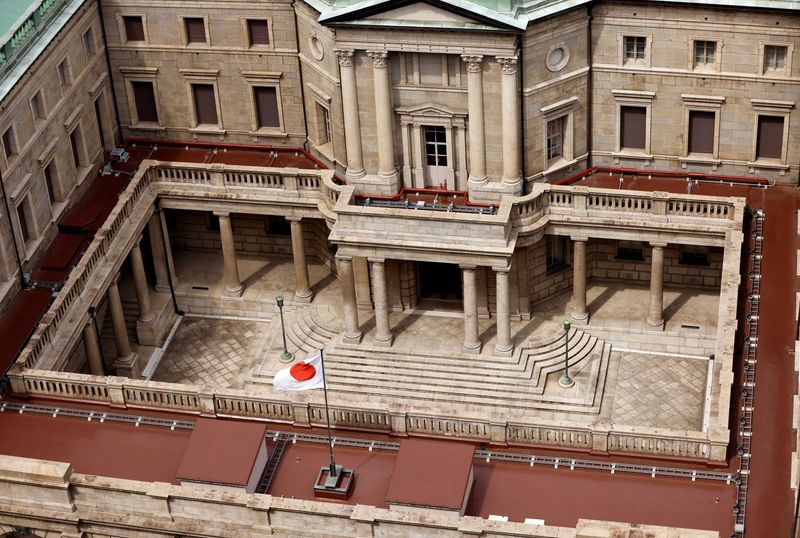By Leika Kihara
TOKYO (Reuters) -More Bank of Japan policymakers discussed the prospects of an eventual exit from ultra-loose policy, a summary of opinions at their September meeting showed, sending 10-year government bond yields up to their highest levels in a decade.
The summary, which followed Governor Kazuo Ueda's weekend speech on the exit path, suggests the central bank is slowly laying the groundwork for the end to negative interest rates.
Some in the nine-member board stressed the need to maintain monetary easing, with one saying an end to its bond yield control and negative interest rate policy "must be tied to the success" of hitting the bank's price goal, the summary showed.
Others went further in laying out the conditions and possible timing of a future exit, even as the board voted unanimously to keep ultra-low interest rates in September.
One member said the second half of the current fiscal year, ending in March 2024, will be an "important period" in determining whether the BOJ's price target will be achieved, according to the summary released on Monday.
Another member said achievement of the BOJ's 2% inflation target seems to have "clearly come in sight," which meant the bank may be able to determine whether the target will be met around January to March next year, the summary showed.
The hawkish comments pushed up the benchmark 10-year Japanese government bond (JGB) yield to 0.775%, a decade-high and close to the BOJ's 1.0% hard cap, prompting the bank to announce that it would conduct additional bond buying.
"The summary clearly shows a change in tone among the board with the members' expectations for wage rises heightening," said Ayako Fujita, chief economist at JPMorgan Securities.
"More members see prospects of a near-term policy shift," she said, pointing out that five of the 14 opinions on monetary policy mentioned the chance or sequence of a future exit.
Under yield curve control (YCC), the BOJ guides short-term interest rates at -0.1% and the 10-year bond yield around zero. It also buys risky assets such as exchange-traded funds (ETF) as part of efforts to revitalise growth.
With inflation exceeding the BOJ's 2% target for more than a year, markets are rife with speculation the bank will soon end negative rates and dismantle YCC. A Reuters poll in September forecast that negative rates will end some time next year.
"Even if the BOJ were to terminate its negative interest rate policy, this can be considered as continuation of monetary easing if real interest rates remain negative," one member was quoted as saying in the September meeting summary.
While the BOJ took steps in July to make YCC more flexible, they have failed to eliminate its side-effects, another opinion showed, adding the role of YCC might be nearing an end.
In the future phase of an exit from ultra-loose policy, the BOJ should consider not only the treatment of YCC but whether it needs to keep buying risky assets, one opinion showed.
The summary showed some members flagging the need for small firms to hike wages and inflation to be driven more by higher service prices, for inflation to sustainably hit 2%.

In a sign higher wages may push up service prices, the BOJ's quarterly "tankan" survey showed big non-manufacturers revised up their five-year inflation expectations and more firms felt job shortages were intensifying.
Ueda has stressed the need to keep ultra-low rates until the recent cost-driven inflation turns into price rises underpinned by solid domestic demand. But he also said the BOJ will consider an exit when sustained achievement of 2% inflation is in sight.